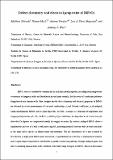Por favor, use este identificador para citar o enlazar a este item:
http://hdl.handle.net/10261/160097COMPARTIR / EXPORTAR:
 SHARE SHARE
 CORE
BASE CORE
BASE
|
|
| Visualizar otros formatos: MARC | Dublin Core | RDF | ORE | MODS | METS | DIDL | DATACITE | |

| Campo DC | Valor | Lengua/Idioma |
|---|---|---|
| dc.contributor.author | Schrade, Mattias | - |
| dc.contributor.author | Masó, Nahum | - |
| dc.contributor.author | Perejón, Antonio | - |
| dc.contributor.author | Pérez-Maqueda, Luis A. | - |
| dc.contributor.author | West, Anthony R. | - |
| dc.date.accessioned | 2018-02-05T08:26:34Z | - |
| dc.date.available | 2018-02-05T08:26:34Z | - |
| dc.date.issued | 2017 | - |
| dc.identifier | doi: 10.1039/c7tc03345a | - |
| dc.identifier | issn: 2050-7526 | - |
| dc.identifier.citation | Journal of Materials Chemistry C 5: 10077- 10086 (2017) | - |
| dc.identifier.uri | http://hdl.handle.net/10261/160097 | - |
| dc.description.abstract | BiFeO attracts considerable attention for its rich functional properties, including room temperature coexistence of magnetic order and ferroelectricity and more recently, the discovery of conduction pathways along ferroelectric domain walls. Here, insights into the defect chemistry and electrical properties of BiFeO are obtained by in situ measurements of electrical conductivity, σ, and Seebeck coefficient, α, of undoped, cation-stoichiometric BiFeO and acceptor-doped BiCaFeO ceramics as a function of temperature and oxygen partial pressure pO. BiCaFeO exhibits p-type conduction; the dependencies of σ and α on pO show that Ca dopants are compensated mainly by oxygen vacancies. By contrast, undoped BiFeO shows a simultaneous increase of σ and α with increasing pO, indicating intrinsic behavior with electrons and holes as the main defect species in almost equal concentrations. The pO-dependency of σ and α cannot be described by a single point defect model but instead, is quantitatively described by a combination of intrinsic and acceptor-doped characteristics attributable to parallel conduction pathways through undoped grains and defect-containing domain walls; both contribute to the total charge transport in BiFeO. Based on this model, we discuss the charge transport mechanism and carrier mobilities of BiFeO and show that several previous experimental findings can readily be explained within the proposed model. | - |
| dc.publisher | Royal Society of Chemistry (UK) | - |
| dc.relation.isversionof | Postprint | - |
| dc.rights | openAccess | en_EN |
| dc.title | Defect chemistry and electrical properties of BiFeO3 | - |
| dc.type | artículo | - |
| dc.identifier.doi | 10.1039/c7tc03345a | - |
| dc.embargo.terms | 2018-09-12 | - |
| dc.date.updated | 2018-02-05T08:26:34Z | - |
| dc.description.version | Peer Reviewed | - |
| dc.language.rfc3066 | eng | - |
| dc.relation.csic | Sí | - |
| dc.type.coar | http://purl.org/coar/resource_type/c_6501 | es_ES |
| item.openairecristype | http://purl.org/coar/resource_type/c_18cf | - |
| item.fulltext | With Fulltext | - |
| item.cerifentitytype | Publications | - |
| item.openairetype | artículo | - |
| item.grantfulltext | open | - |
| Aparece en las colecciones: | (ICMS) Artículos | |
Ficheros en este ítem:
| Fichero | Descripción | Tamaño | Formato | |
|---|---|---|---|---|
| Defect_chemistry_and_electrical_properties_of_BiFeO3.pdf | 2,78 MB | Adobe PDF |  Visualizar/Abrir |
CORE Recommender
SCOPUSTM
Citations
55
checked on 09-abr-2024
WEB OF SCIENCETM
Citations
50
checked on 23-feb-2024
Page view(s)
258
checked on 16-abr-2024
Download(s)
295
checked on 16-abr-2024
Google ScholarTM
Check
Altmetric
Altmetric
NOTA: Los ítems de Digital.CSIC están protegidos por copyright, con todos los derechos reservados, a menos que se indique lo contrario.
